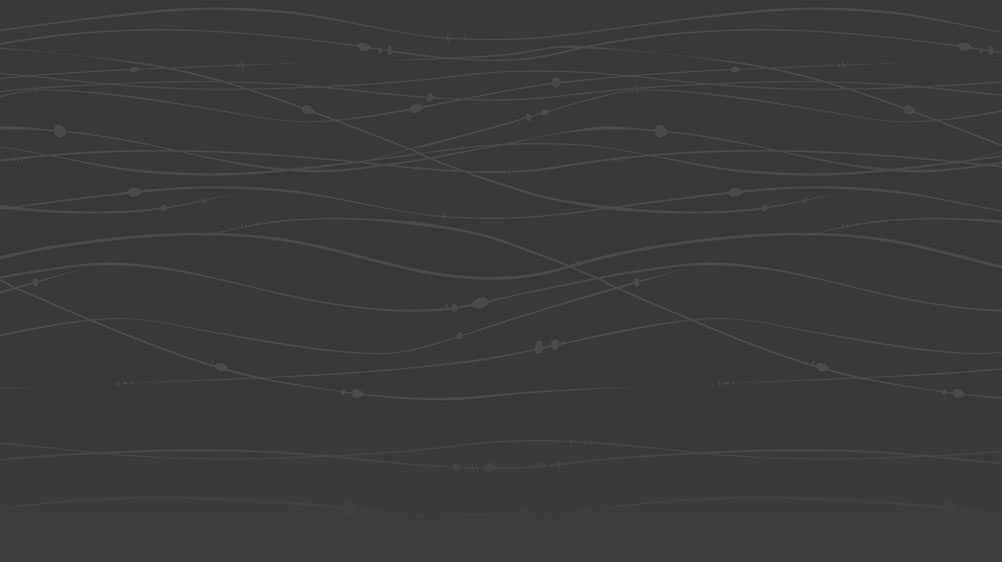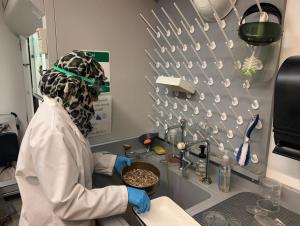

written by Susan Daniel
The Great Lakes Center has a long history of employing undergraduate and graduate students for a variety of research projects. These opportunities allow students from all backgrounds to get a hands-on view of scientific research and a chance to enhance their resumes. In 2020, due to the COVID-19 pandemic, we had to decrease the number of people working in lab spaces, forcing us to lay off many of our student workers. During the pandemic, we were only able to employ one graduate student consistently, compared with 6 pre-pandemic. Fast-forward to 2022: with lifting restrictions, we are now able to have more student workers and provide unique work experiences. Just within the last several months we have hired graduate students Kyle Glenn and Matthew Basista, and undergraduates Ameera Albayed, Kifaya Albayed, and Ruth Embaba.
Students who work in the labs are tasked with processing benthic samples (lakebed sediments that contain invertebrates) collected as a part of the Long-Term Biological Monitoring project funded by the Great Lakes National Program Office (GLNPO). These samples are collected from Lakes Superior, Michigan, Huron, Erie, and Ontario annually aboard the R/V Lake Guardian. Before sample processing, students learn about the environmental history of Great Lakes, the GLNPO long-term monitoring program, the role of the benthic community in aquatic ecosystems, and major benthic organisms they will encounter. Their main task, called picking, is to sift through the sediment of each sample and extract targeted organisms that will be identified later by our taxonomic experts. The process can take a considerable amount of time depending on the sediment type, ranging from 1 hour to 30 hours! Types of sediment encountered can include silt, sand, clay, detritus or decaying plant material, filamentous algae, Dreissena shells, or gravel, and the amount can vary greatly. Some samples have very few organisms to be extracted while others may have as many as 3,000. The most common group encountered are freshwater worms (Oligochaeta) and the invasive Dreissena mussels (mostly quagga, but rarely zebra mussels). Other targeted groups include the non-biting midges (Chironomidae), fingernail clams (Sphaeriidae), snails (Gastropoda), leeches (Hirudinea), mayflies (Hexagenia), scuds/sow bugs/freshwater shrimp (Crustacea), flatworms (Turbellaria), ribbon worms (Nemertea), and a few other miscellaneous groups.
Other tasks our students assist us with include sample archiving, data entry, field work, and image analysis. Sample archiving includes generating a detailed inventory of samples from previous years and checking that they contain the appropriate amount of preservative. This tedious process can take a considerable amount of time and demands attention to detail but is a very important task.
We are very happy to have students back in the lab and look forward to helping build their careers! We also have great opportunities for undergraduate and graduate research. If you are interested in working or doing research for the Great Lakes Center, please contact Susan Daniel at danielse@buffalostate.edu.
Image caption: Undergraduate student Ameera Albayed preparing to process a sample collected from Lake Michigan in July 2021.
Some content on this page is saved in PDF format. To view these files, download Adobe Acrobat Reader free. If you are having trouble reading a document, request an accessible copy of the PDF or Word Document.
